Tuesday 19 June
Today we set off for Trani on the east coast, the
capital of the Puglia region, via a winding road over the Appenines and down
again.
We saw Vesuvius again, this time
with what looked like a puff of steam, and it was obvious from that height that
there was barely a green space to be seen all along the coast to the north and
south. Our bus took us to Naples
railway station where we had lunch then continued on a public bus to
Trani. We dozed for some of the time
and the scenery is as the photos show: agricultural, very well kept farms with hay
bales all over the place (the round ones, only saw two farms with the
old-fashioned oblong bales), then there were grapes and olives as we got closer
to the coast, some stone and pip fruit orchards, wheat – Pete thought it looked
like the Canterbury foothills just beyond Sheffield, lovely rolling
country. We saw countless wind
turbines, apparently a major source of energy in this area, a great sight –
there had to be thousands of them. There were a few quite big areas with large
solar panels lined up too. Rivers looked just like New Zealand with
similar greenery and stony riverbeds just right for taking kids swimming.
Checked into the hotel then an hour later we were
off to the middle of town for a walking tour with guide Marco, very easy to
understand, made the history of the town come alive. We visited the loveliest cathedral, all creamy
gold stone and so peaceful – apparently it had a Baroque makeover but all that
has been removed in recent years and, as in other churches we’ve seen, the
original frescoes have been mostly lost but there are a few left to see. Built
in 1099 it was cleaned a few years ago, with the tower being completely
dismantled and rebuilt – you can see the colour change in the photo. They cleaned and rebuilt the two lower
levels then decided they’d been too aggressive in the cleaning so eased off for
the rest of it. The church is dedicated
to St Nicholas the Pilgrim who was a young man from Greece, arrived in Trani on
a pilgrimage to Rome, aged only 19. He
was a farm boy who seemed to have some difficulties due to his isolated life,
and couldn’t communicate other than to chant over and over that he was going to
Rome.
People thought he was strange and
he was thrown out of several towns but through what seemed to be kindness to
children and animals in Trani he stayed on.
He became ill and then died of pneumonia three weeks later but due to
his holiness several miracles were attributed to him and he was eventually
canonised. The crypt chapel contains
his relics – lower arm bones in a silver casing, and a statue, it felt a
privilege to be there. The air was full
of incense which just added to the atmosphere.
We continued around the waterfront which was lovely
with older stone buildings on one side and the marina on the other side with
fishing boats anchored up and a few fish stalls still selling octopus, shrimps,
sardines and other varieties. We saw the
oldest synagogue in Europe, built in the time of Frederic 2. He was very liberal, wanted to learn from the
Jews, Muslims and Christians so encouraged them to come to Trani. Most Jews came from Spain, the Balkans and
Croatia. There was also a big influence by
the Venetians and Dalmatians.
The sunset
was stunning, the sun’s rays pierced the clouds and shone out into the sky
above us.
There are a lot of churches in Trani and we were
told it was a jumping-off spot for the crusaders; they had plenty to pray about
before they set off for the Holy Land, and even more to be thankful for if they
came back alive!
Dinner was one of the nicest we’ve had, mostly fish
on the menu and we all had plenty to talk about, the tour group is very easy to
get on with. I had sea bass in a lemon
cream sauce – not really a fish eater but I could be converted! The desserts were given full marks by the
team, Pete shared his chocolate semi-freddo.
A perfect end to a good day,
not too busy, but with plenty to see.
Wednesday 20 June
This was a free day in Trani so we all did our own
thing after a lazy breakfast. We headed
into town at 10.30, first stopping at the cathedral again because it was well
worth a second look. This time we struck
a wedding rehearsal and two singers practicing. The organ (a recently
reconditioned Hammond) is huge and has a beautiful tone.
The church
steps and inside were decorated with blue and white flowers, little fancy-wrapped
boxes of rice were all waiting for the guests too. The carpet in the aisle was covered with a
white runner and everything looked perfect.
One of the group managed to capture some photos of the bridal couple in
the lanes near the cathedral later, perfect.
Mad dogs and Pete go out in the midday sun – and off
he went to the end of the breakwater to take a few photos and ‘just to say I’ve
been there’ while I stood in the shade of the cathedral and
people-watched. Clothing in this part of
Italy is certainly less brief than in Amalfi, there it was anything goes
especially tiny, tiny shorts and barely-there tops. There
isn’t a beach in Trani but people were sitting or sunbathing on the breakwater
rocks, all shapes, sizes and ages. It
was extremely hot, not helped by the sun reflecting off the white stone pavers
everywhere, but we walked round to the far end of the waterfront, then part way
back again when we stopped for lunch.
I didn’t
fancy Pete’s octopus and olive paté panini one little bit but he said it
was tasty.
We had a couple of hours back in the hotel then it
was off again to visit Castel del Monte about half an hour away on a road which
was planted on both sides with olives as far as the eye could see. This castle was built in about the 13th
century, had been neglected and vandalised through the years but is now a
UNESCO world heritage site. It’s completely
empty but as Pete said, you are better able to appreciate the construction of
the castle. It may have been built in a
strategic position but doesn’t have defensive components (e.g. arrow slits etc)
other than a portcullis; some say it was a hunting lodge, another theory was
that Frederic 2 used it to observe the stars because the central courtyard is
open to the sky. Whatever, it was well
worth the visit and is now being looked after very well. We just wandered and took in the thick walls
(at least 1 – 1.5m), the pink coral stone doorways throughout, very detailed
stonework above the windows with different coloured stones inset in perfect
order.
There were only two chimneys I think;
one we could see though it had been broken up almost to the ceiling. The creamy stone has been worn smooth over
the years by countless people walking on stone floors and sitting on what
seemed to be built-in stone benches along all walls so maybe Frederic was a bit
of a party man. It’s well worth the preservation effort. Jacopo was a bit hesitant about taking us
there, and afterwards told me the previous group he’d taken to Castel del Monte
thought it was too empty and not interesting, but all ten of us agreed it was
worth a visit.
Dinner tonight was with eight of us sitting at a
table in a stone arched alleyway, great food and company. I sat by Jacopo, he’s been a tour leader
for about three years, having lived and worked in Australia for a couple of
years and the UK for several months. It
was the end to another great day.
A note on Italian parking……. which is inventive. You see cars parked across pedestrian
crossings (hazard lights on, outside a convenience store, just popped in for
something quickly), tiny electric cars tucked into a space that’s not even a
space, cars parked parallel even when the road markings are clearly marked for
angle parking. It seems if there’s a
space you just drive in.

 Trani, Apulia, Italy
Trani, Apulia, Italy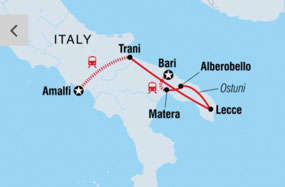


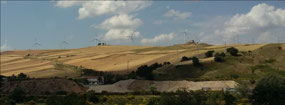

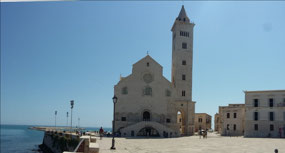
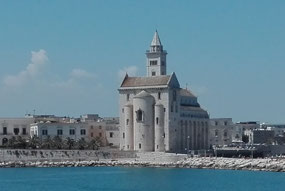









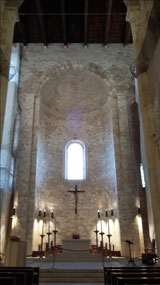
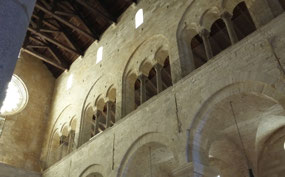
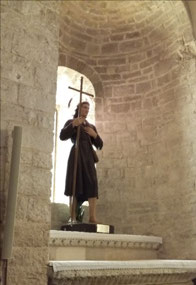
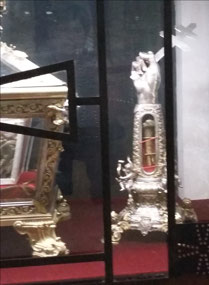
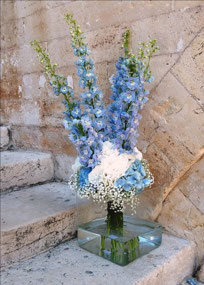
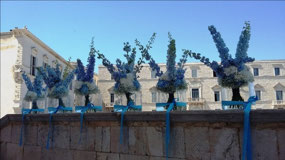
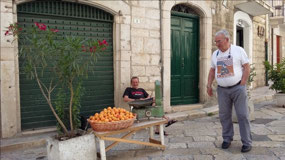
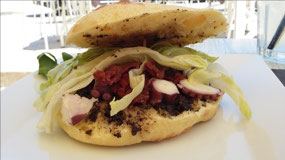

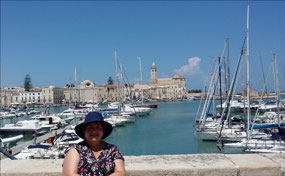
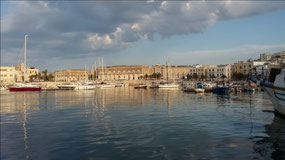
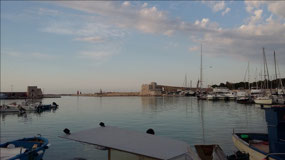
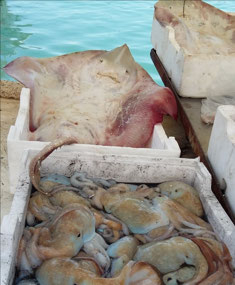
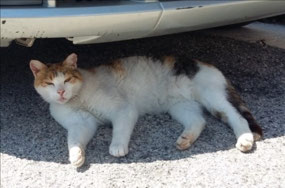
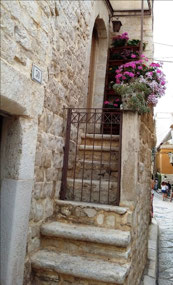
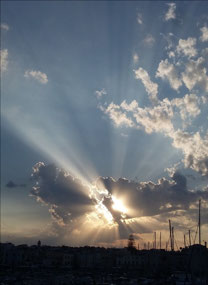

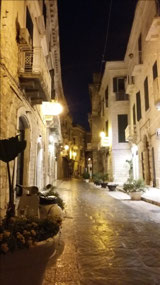
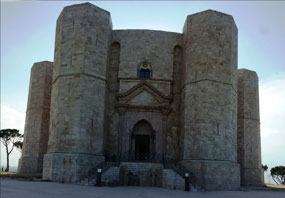

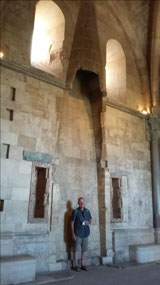
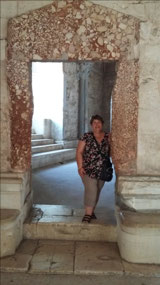
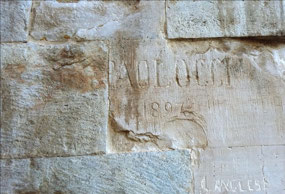
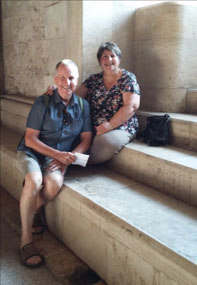

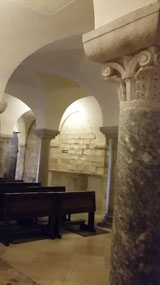
2025-05-23